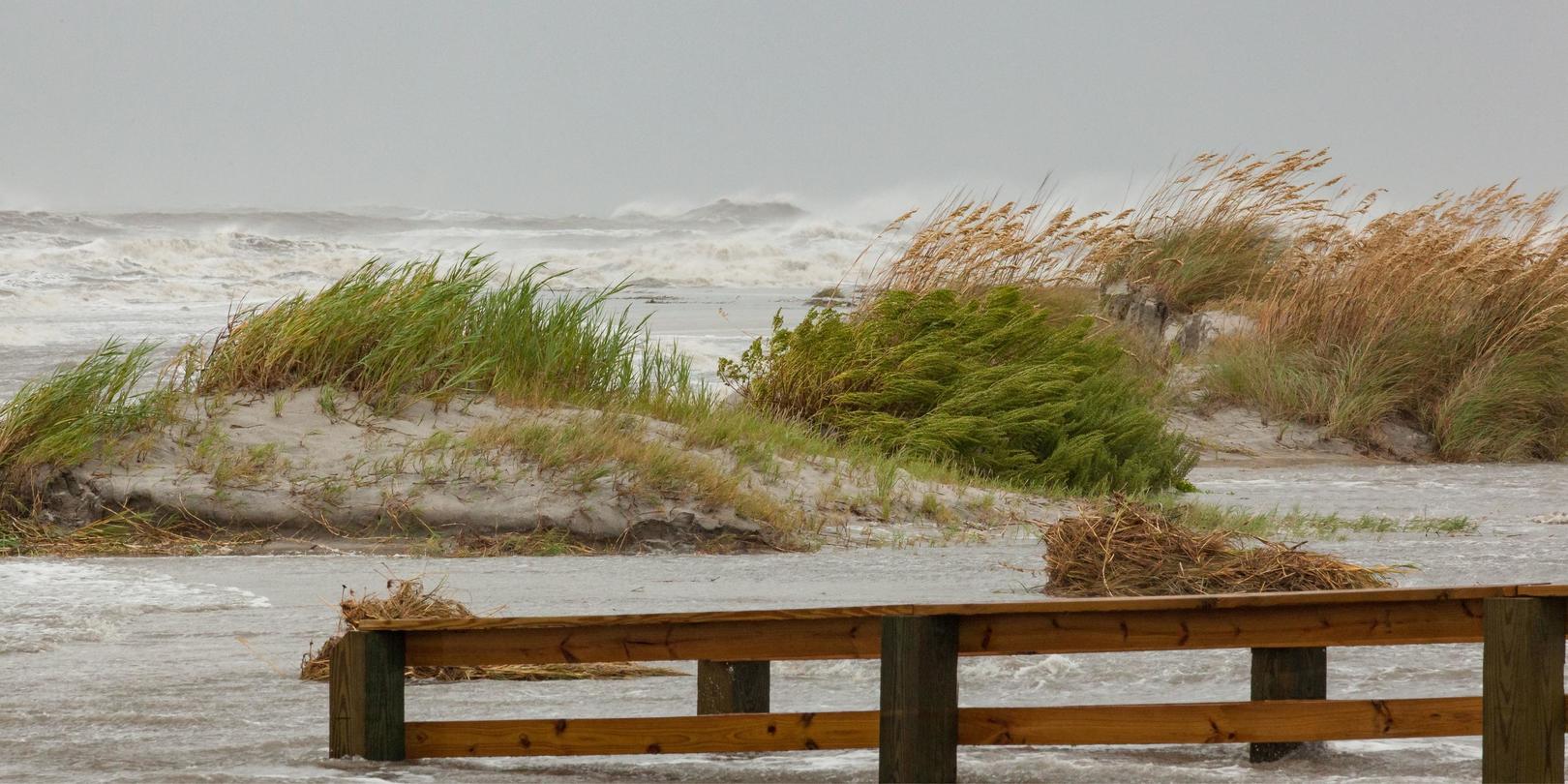Rapidly Intensifying Tropical Cyclones Likely to Increase Flood Hazard in the North Atlantic as Climate Warms

Many of the most devastating tropical cyclones (TCs) in history, including Hurricanes Andrew (1992) and Katrina (2005), underwent a process known as rapid intensification (RI). Defined by a wind speed increase of at least 30 knots (35 mph) within a 24-hour period, RI can be difficult to predict and can leave coastal regions with little time to prepare for a high-intensity TC, as happened when last summer’s hurricane Otis made landfall at Acapulco.
The historical devastation wrought by tropical cyclones that undergo rapid intensification has sparked new research into whether climate change will increase the frequency of RI events. However, few studies have examined the degree to which future RI may worsen coastal flooding accompanying tropical cyclones. Based on the findings of a new study conducted by Princeton researchers, rapid intensification events are already more hazardous than normal cyclones and future climate warming causes large increases in the likelihood of RI close to land.
Downscaling synthetic tropical cyclone data from global climate and hazard models for stormtide and rain, the researchers examined the dangers of rapidly-intensifying TCs under historical (1980-2005) and future (2070-2100) mid-range climate scenarios in the North Atlantic.
The results show that the likelihood of RI happening close to landfall increases from the historical to future scenario, such that the probability of RI within 24 hours of landfall increases from 15% to 28%. In addition to the increases in RI close to landfall, the results suggest historically unprecedented intensity changes by the end of the century, with some modeled TC events having wind intensity changes exceeding 100 knots (115 mph) in 24 hours.“Many coastal areas now exposed to landfalling tropical cyclones are nevertheless rather vulnerable to damages and poorly organized for evacuation,” says Michael Oppenheimer, Albert G. Milbank Professor of Geosciences, International Affairs, and HMEI and a co-author on the paper. “With such dangerous storms projected to worsen, adaptation planners and emergency managers had better take heed before disaster strikes.”
The researchers also found that RI events are currently more hazardous than normal TCs, producing significantly higher rainfall hazard levels compared to events that have not rapidly intensified. The study also addresses the impact of RI on the 100-year flood events — which are events with a 1% chance to happen in any given year due to heavy rainfall or storm surge or both — finding that events that undergo RI dominate the increasing probability of what is currently a very rare event. Given the occurrence of RI events are projected to rise by 10-30% for each degree of global mean temperature increase, the changing climate will likely lead to more rapidly intensified cyclones and greater flooding potential in the coming years.
“Our findings project a troubling future — with stronger, more frequent and hazardous RI of TCs close to landfall, affording coastal communities limited time to prepare," explains lead author Joseph Lockwood, a PhD candidate in geosciences. “This, together with increasing sea levels, implies the need for enhanced focus on refining hurricane intensity forecasts and preparing communities to quickly react to high-intensity hurricanes making landfall.”
The paper, “Increasing Flood Hazard Posed by Tropical Cyclone Rapid Intensification in a Changing Climate,” was co-authored by Joseph W. Lockwood (Department of Geosciences, Princeton University), Ning Lin (Civil and Environmental Engineering, Princeton University), Avantika Gori (Civil and Environmental Engineering, Princeton University), and Michael Oppenheimer (School of Public and International Affairs, Department of Geosciences, and High Meadows Environmental Institute, Princeton University). The paper appeared in AGU’s Geophysical Research Letters on February 28th, 2024. Lockwood is supported in part by an HMEI-STEP fellowship (Ford Fellow) from the High Meadows Environmental Institute at Princeton University.
